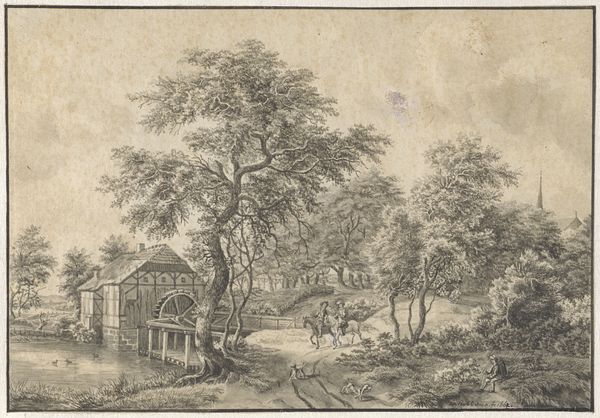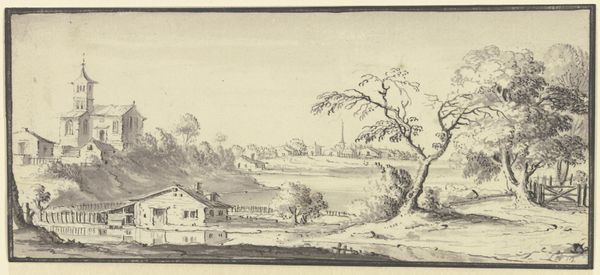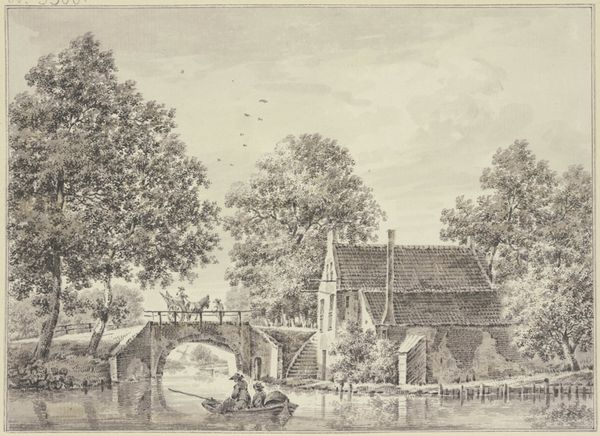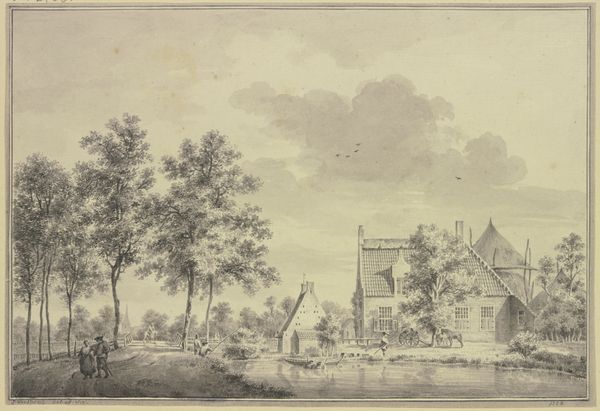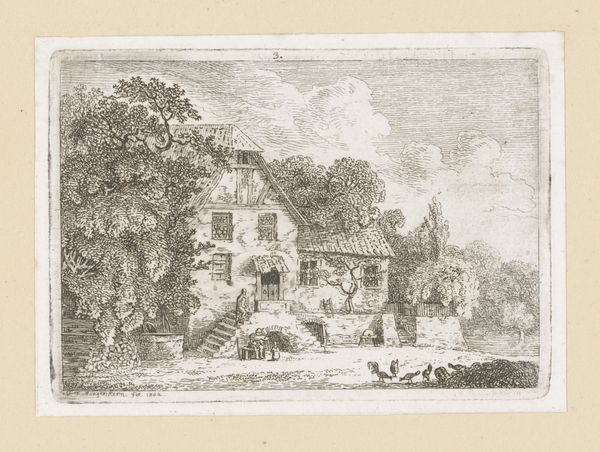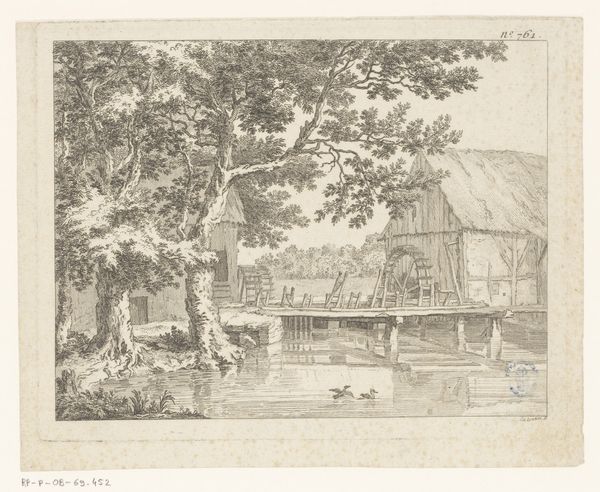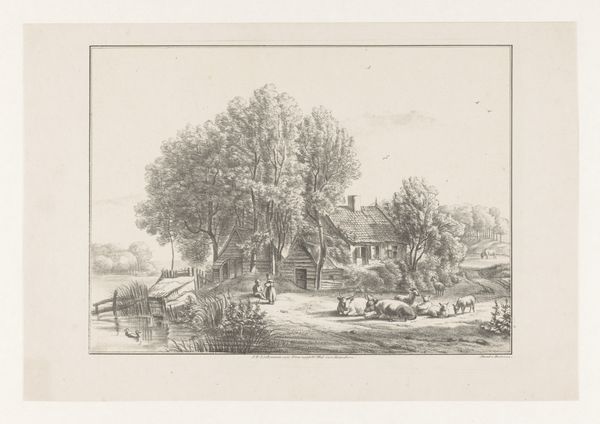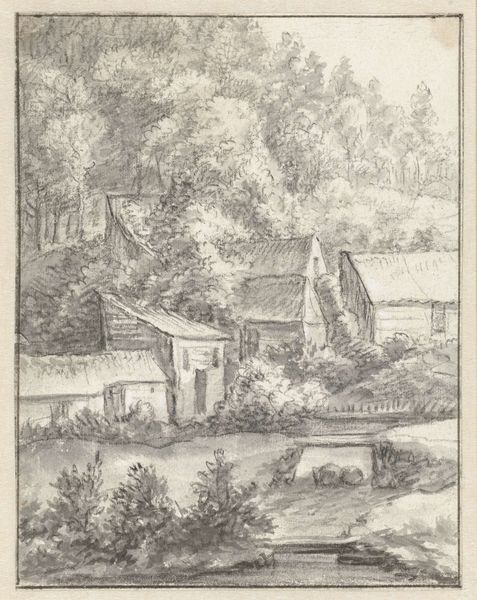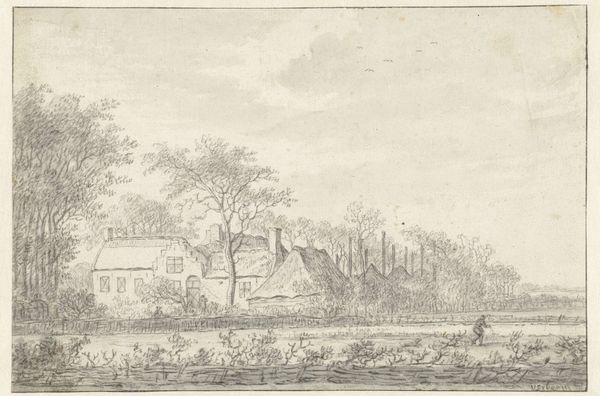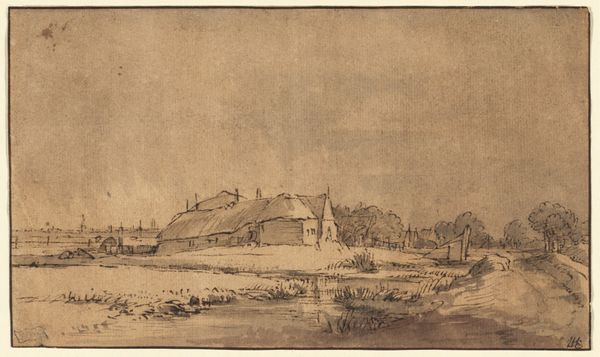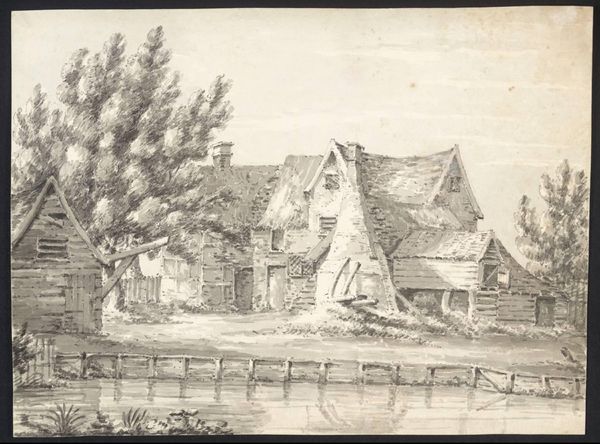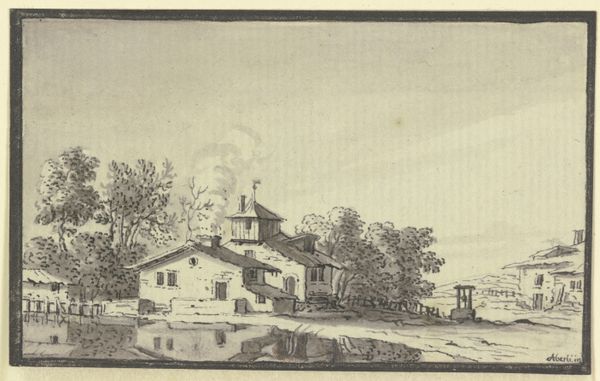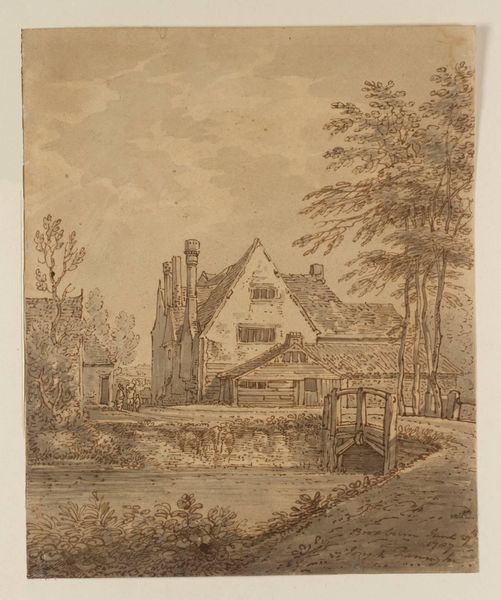
drawing, ink, pencil, chalk, graphite, architecture
#
pencil drawn
#
drawing
#
baroque
#
landscape
#
ink
#
pencil drawing
#
pencil
#
chalk
#
graphite
#
14_17th-century
#
architecture
Copyright: Public Domain
Curator: Ah, yes, here we have "Farm at a Channel" by Simon de Vlieger, a 17th-century Dutch landscape drawing rendered in graphite, chalk, ink, and pencil. It's currently part of the Städel Museum collection. Editor: My first impression is of a meticulously observed and serene scene, yet executed with an incredible lightness of touch. The textures created with such simple media are quite captivating. Curator: Indeed. Vlieger, while admired for his seascapes, also demonstrated a keen interest in the rural Dutch landscape. Note how this drawing, though seemingly simple, speaks to the rising economic power of the Dutch Republic and its citizens' connection to the land. The placement of the farm near a waterway highlights its connection to trade routes, the lifeblood of the Dutch Golden Age. Editor: I'm drawn to how the artist has structured the composition. The buildings and foliage aren't just represented; they’re arranged to guide the viewer's eye deeper into the scene. It's like a stage, with layers unfolding—a beautiful arrangement of forms that emphasizes horizontality and recession. Curator: You’re absolutely right. Vlieger isn’t just representing a place; he’s also constructing an image imbued with the values of the Dutch elite. These landscapes weren't merely topographical records; they also acted as signifiers of property and progress, commissioned by and catering to the burghers. Editor: Despite this, the tonal values, the delicate gradations... they generate such a strong feeling of intimacy with the natural world. The artist truly used the potential of the various media to the fullest, even though it's such an understated palette. Curator: Yes, and by understanding who commissioned and enjoyed these kinds of images, we learn how landscape imagery became a tool for reinforcing Dutch national identity and conveying social standing within the young Republic. It became a reflection of the wealthy mercantile class and a celebration of its connection with land. Editor: Analyzing this piece highlights how much visual information the human eye can extract and organize, from minimal variation on shades to construct the sense of perspective and place, so much beauty from the ordinary! Curator: Understanding the economic and social context certainly enriches my appreciation of this piece and allows me to explore what Dutch society valued.
Comments
No comments
Be the first to comment and join the conversation on the ultimate creative platform.
